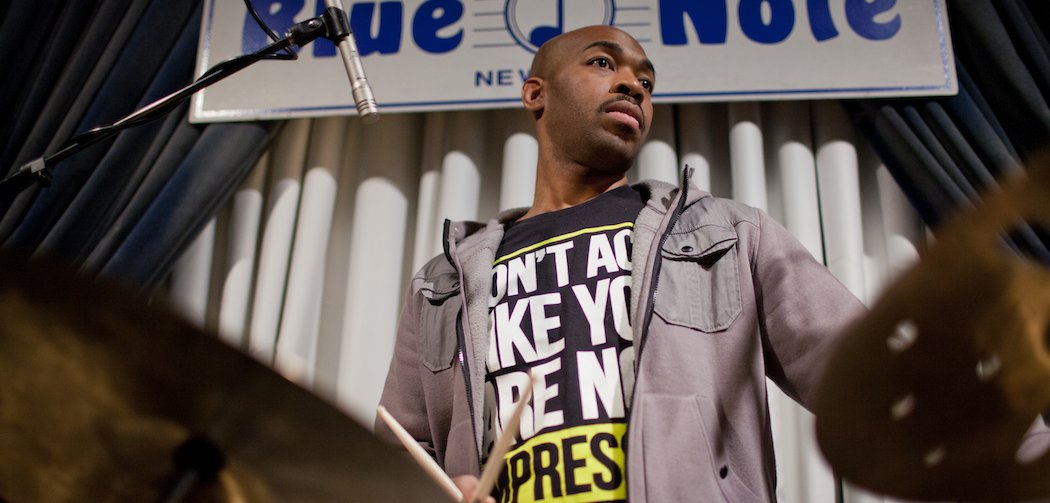Advertisement
Eric Harland Brings Electrifying Drumbeats Back To The Regattabar

Musical innovation often comes from taking a key component of the music and turning it upside down. As a sideman on close to 200 albums and now debuting as a leader in his new album, Eric Harland’s genre-defying drumbeats take the listener into new musical territory.
On Sept. 23 at the Regattabar in Cambridge, he'll be leading the Eric Harland Voyager --- a group made up of groundbreaking musicians in their own right.
Harland will be joined by Taylor Eigsti on piano, Julian Lage on guitar, Walter Smith III on sax, and Harish Raghavan on bass, for the group’s first studio recorded album, “Vipassana,” released in August. In 2010, they joined Harland for Voyager’s first album, “Live by Night.” (Vocalist Chris Potter and guitarist Nir Felder also make several appearances on “Vipassana,” but won’t be at the Regattabar.)
Not too long ago, many people would have said that swing was a defining characteristic of jazz. (Wynton Marsalis still insists that swing and blues are what define jazz.) While previous generations have shifted jazz away from swing, even toward rock fusions, Harland — with his visiblity on so many albums — has been key in striking grooves reminiscent of hip-hop and neo-soul. Harland has a way of fitting countless drum timbres into the small space of a measure.
Part of Voyager’s allure is how it crafts layers of sounds that move elegantly around the soloist. Harland enters the track, “Capacity,” with his tier of sounds — a steady cymbal with depths of subdivisions. The guitar establishes a comfortable vamp with a relaxed repetition of chords. The tenor adds the final texture with a melody that rubs against Harland’s cymbal in a delicious way. You can consistently hear the stacking of drums, piano, and sometimes guitar moving together to support and react to the soloist.
Harland’s vision shines through in this assemblage of musical patterns. Other tracks, especially ones featuring vocalist Chris Turner’s ethereal overdubs, also encompass a similar vision. Debuting as the leader for his recording, Harland has a thought-out image for each track on the album.
“The whole concept of the record, even down to the art design on the cover, has to do with the threefold being of an individual — whether you call it mind-body-spirit, or id-ego-superego, or here-there-the space in between — these are all ways to define the trinity,” Harland says in an interview with Revive-music.com. “There’s an equilateral triangle on the cover that’s like the base: mind, body, and spirit. Then within it, there’s all these other equilateral triangles that are just moving around, inside of you and outside of you.”
Harland made an appearance at the Regattabar earlier in the year with Dave Holland’s Prism. As a sideman, he helped lift that performance to another level. It will be exciting to see what he does as a leader.
